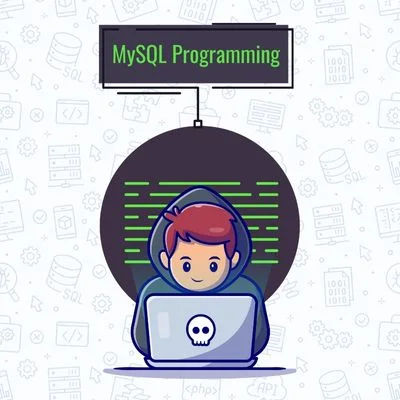MySQL Programming
What is SQL? SQL stands for Structured Query Language. SQL is used to communicate with a database. According to ANSI (American National Standards Institute), it is the standard language for relational database management systems. Introduction MySQL is a widely used …
What is SQL?
SQL stands for Structured Query Language. SQL is used to communicate with a database. According to ANSI (American National Standards Institute), it is the standard language for relational database management systems.
Introduction
MySQL is a widely used open-source relational database management system that empowers businesses and individuals to store, manage, and manipulate data efficiently. Learning MySQL programming can unlock a world of possibilities, whether you’re a beginner seeking to understand the fundamentals of databases or an experienced programmer aiming to enhance your database management skills. In this article, we will explore the comprehensive curriculum of a MySQL programming course and highlight the key concepts and skills you can gain through the learning journey.
Getting Started with MySQL
Before diving into the intricacies of MySQL programming, it’s essential to set up the environment and familiarize yourself with the tools. The course begins with an introduction to MySQL and guides you through the installation and configuration process. You’ll also become acquainted with MySQL Workbench, a visual database design and administration tool that simplifies your workflow and enhances productivity.
Fundamentals of SQL
Structured Query Language (SQL) serves as the foundation for interacting with databases, and mastering its syntax and commands is crucial for efficient data manipulation. The course delves into the basics of SQL, including creating and manipulating databases, understanding tables and data types, and writing SQL queries to retrieve and filter data. Through hands-on exercises, you’ll gain confidence in writing SQL statements and performing fundamental operations.
Retrieving Data with SELECT Statements
SELECT statements are at the core of retrieving data from MySQL databases. In this section, you’ll learn how to construct SELECT queries to retrieve data from single tables and refine your results using WHERE clauses. Additionally, you’ll explore sorting and ordering techniques to present data in a meaningful way, and discover methods to limit and paginate query results, allowing for efficient data retrieval in real-world scenarios.
Advanced SQL Techniques
To leverage the full power of MySQL, you’ll dive into advanced SQL techniques. One of the most powerful features of MySQL is the ability to work with multiple tables through JOIN operations. You’ll learn how to combine data from multiple tables using various JOIN types and harness the potential of subqueries to tackle complex data retrieval challenges. Furthermore, the course will cover grouping and aggregating data using GROUP BY and HAVING clauses, as well as performing data modification using INSERT, UPDATE, and DELETE statements.
Database Design and Normalization
A well-designed database is essential for efficient data management and scalability. This section of the course focuses on the principles of database design, entity-relationship (ER) diagrams, and normalization techniques. You’ll learn how to structure your databases to eliminate redundancy, ensure data integrity, and establish relationships between tables. By following best practices in database design, you’ll be equipped to create robust and scalable database solutions.
Stored Procedures and Functions
Stored procedures and functions offer modularity and reusability in database programming. The course covers the concepts and implementation of stored procedures and functions in MySQL. You’ll discover how to create and execute stored procedures, allowing for efficient and secure execution of frequently used SQL code. Additionally, you’ll explore the benefits of utilizing functions to encapsulate complex logic and simplify database programming.
Security and Performance Optimization
Securing your database and optimizing performance are critical aspects of database administration. This section of the course will guide you through implementing security measures in MySQL, managing user privileges, and controlling access to data. You’ll also learn about indexing techniques to enhance query performance and minimize response times. Additionally, the course will cover backup and recovery strategies to protect your valuable data.
Advanced Topics in MySQL
To further expand your knowledge, the course delves into advanced topics in MySQL. You’ll explore triggers and events, which allow you to automate actions based on specified database events. Additionally, you’ll learn how to create views for simplified data access and explore advanced indexing techniques to optimize complex queries. The course also covers full-text search capabilities in MySQL, enabling you to perform efficient text-based searches within large datasets. Finally, you’ll delve into handling transactions and managing concurrency to ensure data integrity in multi-user environments.
.












